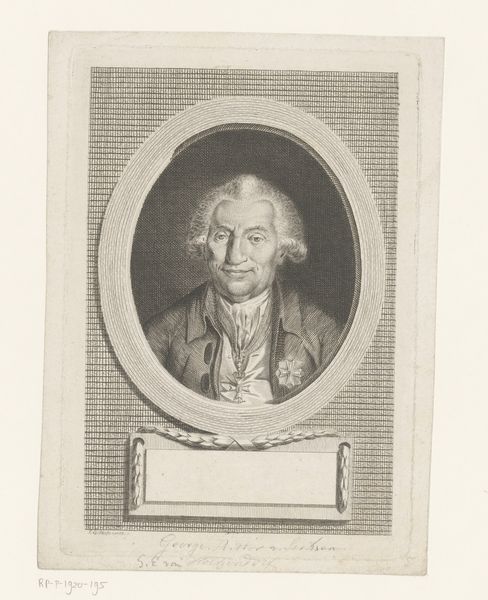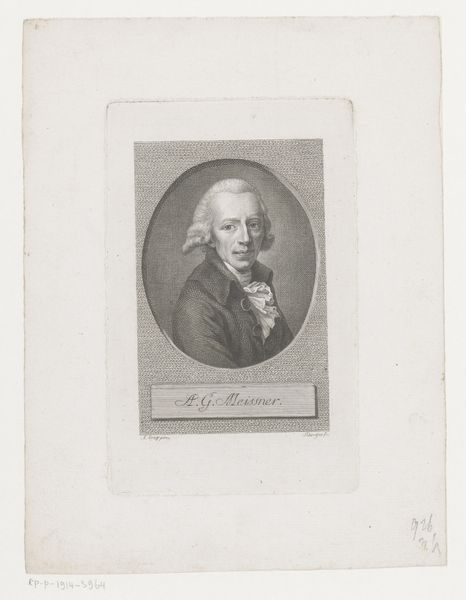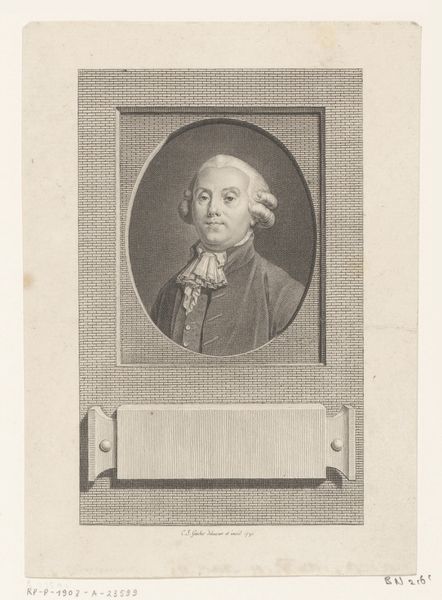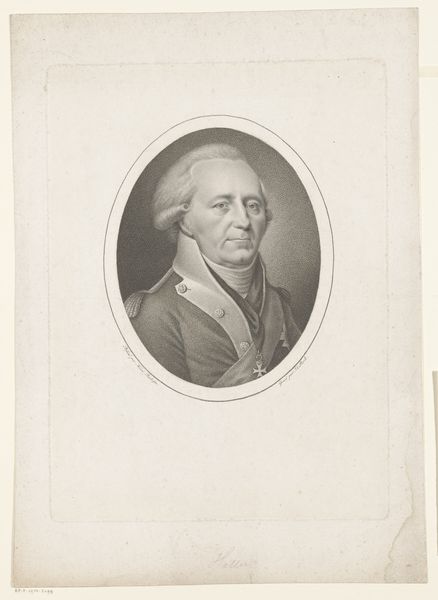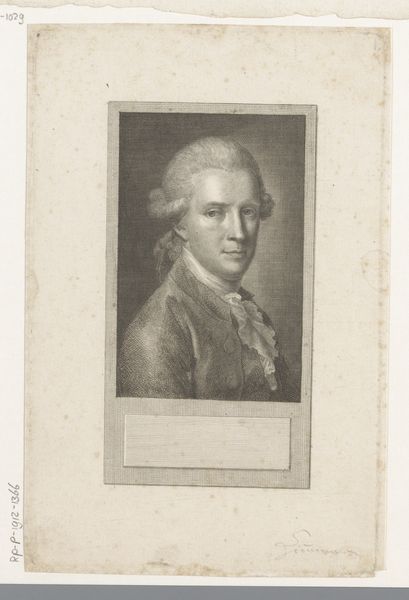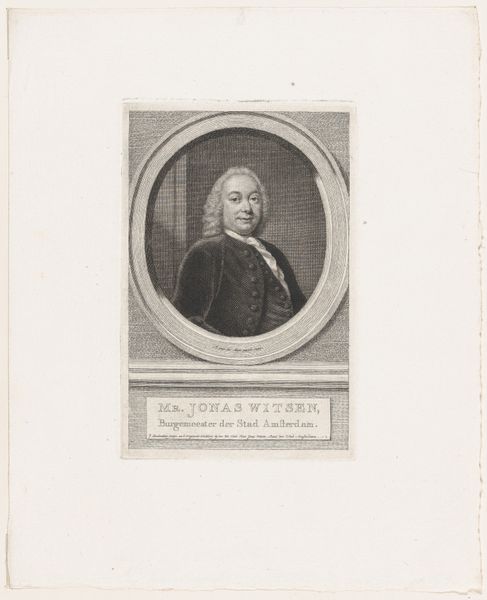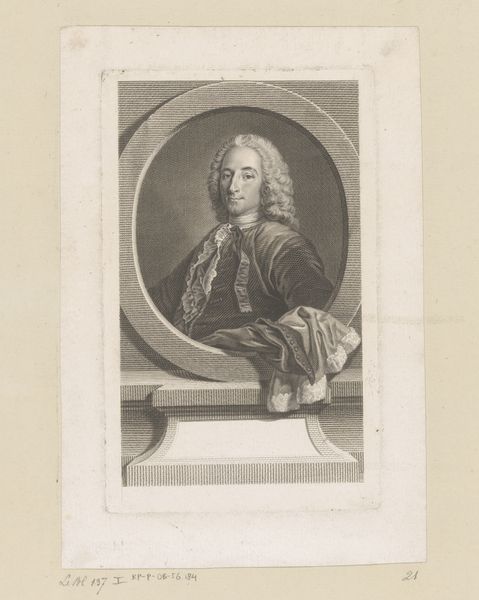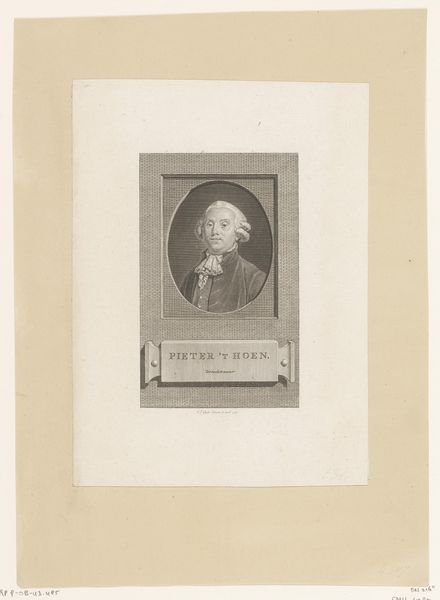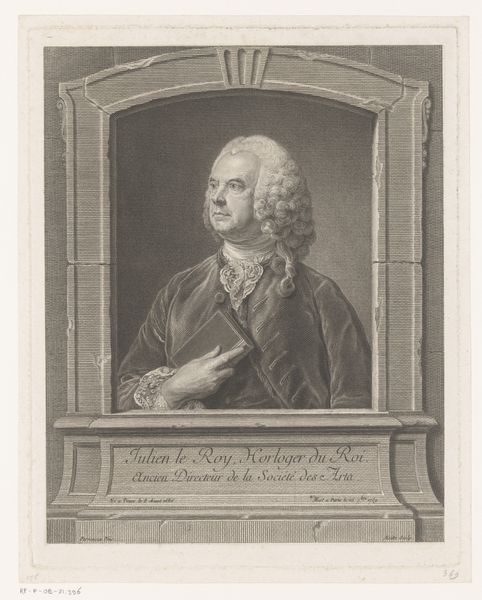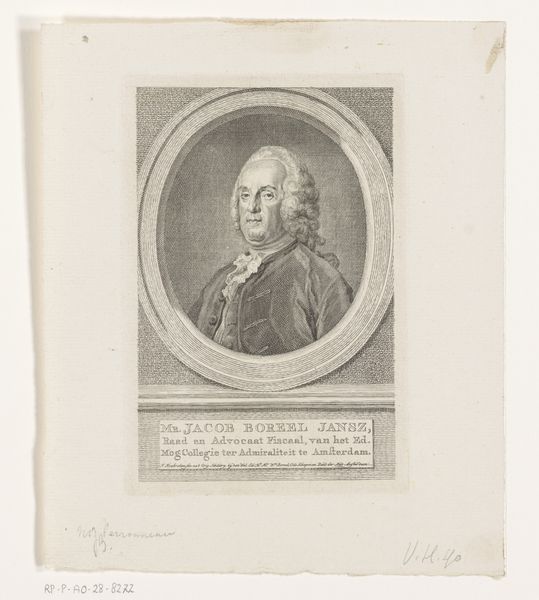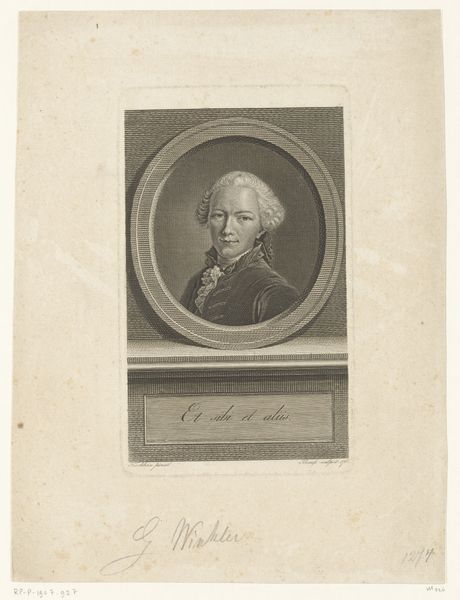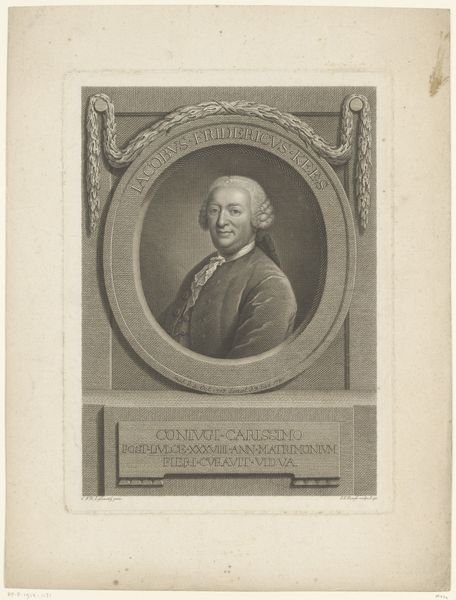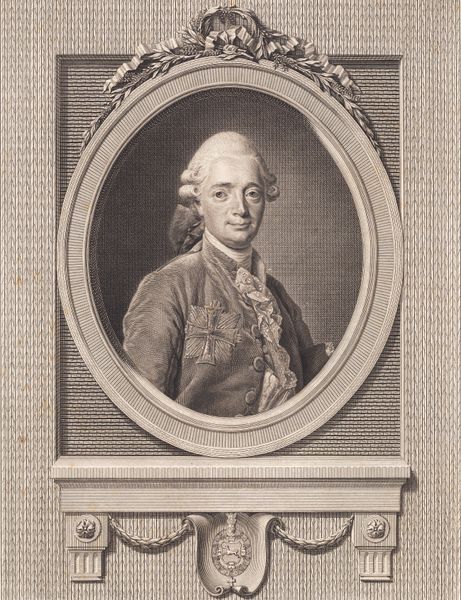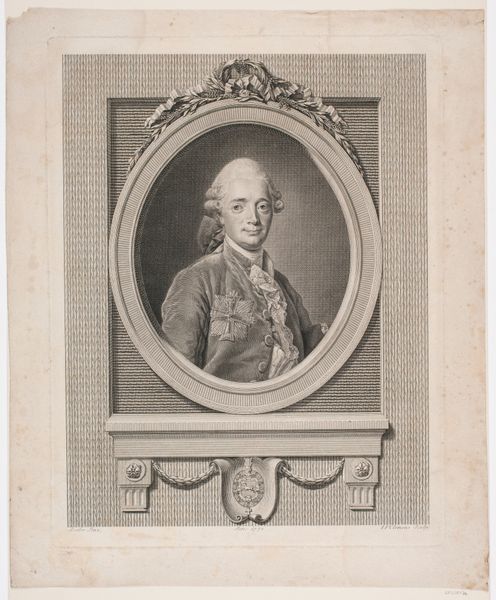
Dimensions: height 17 cm, width 13 cm, height 29.4 cm, width 25.3 cm, depth 3.4 cm
Copyright: Rijks Museum: Open Domain
Curator: Here we have a “Self-Portrait” by Dionys van Nijmegen, dating sometime between 1750 and 1798, rendered with oil paints. Editor: It strikes me as an intimate, almost humble portrayal, especially given the artist's somewhat wary expression. Curator: Indeed. It speaks to the emergence of bourgeois individualism in that period. Consider how artists used self-portraiture to define their own identities within a rapidly changing social landscape. Editor: I'm immediately drawn to the craft itself. Look at the textures Van Nijmegen coaxes from oil paint – the delicate rendering of his wig, the sheen on his jacket, and the rough weave implied in that white neck cloth. Curator: The white neck cloth is a focal point. Its luminosity draws our eye, framing the face and indirectly signalling status, although with an intriguing understated flair. The choice to portray himself in what appears to be practical work clothing can signal an emerging self-fashioning, where artists were increasingly depicted as intellectuals and not just craftspeople. Editor: Absolutely. This small-scale work on wood offers a tangible connection to both artistic labor and potential market consumption in that era. Did Nijmegen intend it to sell or simply use it as an act of material introspection? Curator: Perhaps it’s both. The work provides a snapshot of the complex dance between artistic intention, the available materials, and a burgeoning market economy that changed artistic practice. I would wonder if the portrait indicates his relationship to networks of fellow artists and collectors in the period. Editor: For me, understanding the material reality helps re-ground it in labor and daily life. Van Nijmegen couldn't separate artistic exploration from economic considerations, just as artists today are affected by material access, costs and choices of production. Curator: That gives the work a new resonance for me too; its enduring power isn’t just its immediate impression, but it prompts conversations around gendered and racial inequities that exist in our contemporary world too. Editor: Precisely. Investigating artistic choices brings it closer to the concerns of its time and our own. It's always there in front of us: paint, subject, labour.
Comments
No comments
Be the first to comment and join the conversation on the ultimate creative platform.
